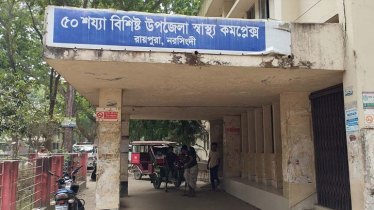
File Photo
Residents of Mymensingh are grappling with daily load shedding exceeding 300 megawatts, causing widespread frustration. While urban areas receive slightly more electricity, rural regions are facing severe discrimination in power distribution. The increased frequency of load shedding in rural areas has left people struggling to cope with the intense heat. This power crisis during the interim government's rule has sparked various reactions among the public.
The local electricity department reports that the reduction in electricity production nationwide has led to proportionate load shedding in Mymensingh as well.
Mohammad Emdadul Haque, Chief Engineer of the Mymensingh Zone at the Power Development Board, stated that reduced production capacity in power plants has caused a rise in load shedding in Mymensingh, similar to the rest of the country. Rural areas are facing increased outages, intensifying the public's discomfort in the sweltering heat.
Due to a drop in gas supply, the Shambhuganj Rural Power Company (RPCL), which has a capacity of 210 megawatts, was only able to provide 7 megawatts yesterday. In Jamalpur, the United Group’s two power plants, with a combined capacity of 315 megawatts, delivered only 130 megawatts.
Furthermore, the Sutiakhali Solar Power Plant, which has a capacity of 50 megawatts, managed to generate just 25 megawatts during daylight hours.
On Wednesday, September 11, during peak hours, Mymensingh received 1,040 megawatts of electricity against a demand of 1,350 megawatts, resulting in a load shedding of over 300 megawatts.
Mohammad Rezaul Karim, Supervising Engineer of the Bangladesh Rural Electrification Board (BREB), explained that the Mymensingh zone, which covers ten districts, including Mymensingh, Jamalpur, Sherpur, and Netrokona, receives around 700 megawatts of power against a peak demand of 1,000 megawatts. This creates a daily shortfall of 300 megawatts.
The control room of the Fulpur Rural Electrification Board reports that only 6 megawatts of power is being supplied against a demand of 14 megawatts in the area. Electricity is available for only 15-16 hours a day, and other rural areas are receiving power for no more than 14-15 hours daily.
Messenger/Shahed








